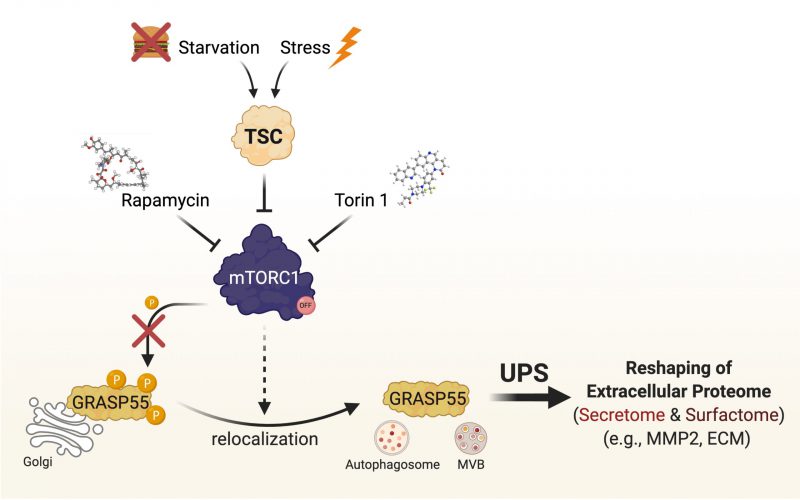Back to article: GRASPing the unconventional secretory machinery to bridge cellular stress signaling to the extracellular proteome
FIGURE 1: mTORC1 activity and GRASP55 relocalization control unconventional protein secretion. Active mTORC1 directly phosphorylates GRASP55 to retain it at the Golgi and prevent UPS. When cells undergo starvation, stress, or upon pharmacological mTORC1 inhibition (e.g., with Rapamycin or Torin1), dephosphorylation of GRASP55 drives its relocalization from the Golgi to vesicles of UPS, like autophagosomes and MVBs, to promote UPS of selected cargoes and to reshape the extracellular proteome (secretome and surfactome).

